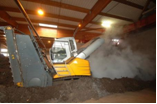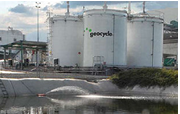News
ACR+ International Seminar on the Interpretation of Life Cycle Thinking in the Waste Management Hierarchy
5-6 July 2011 in Brussels, with the support of HOLCIM Group Ltd.
- Final Report now available for ACR+ Members
“The Interpretation of Life Cycle Thinking in the Waste Management Hierarchy” Report based on the ACR+ International Experts Seminar hold on 5-6 July 2011 in Brussels is now available for ACR+ Members.
You can download here the Final Report.
- Outcomes
Thank you for participating in the Seminar. All the presentations can now be downloaded below:
- Waste and Life Cycle Thinking - an introduction by Jean-Pierre Hannequart
- LCA applied for Alternative Resources Management as a “Sustainability Act” - by Jean-Pierre Degré
- Towards International Recognition and Rules for Co-processing. From Chile to UNEP-SBC- by Andrés Jensen
- Life Cycle Thinking for Local Authorities- by Cok van Bergen Henegouw
- The Ecological Footprint of Waste Management - a Case Study - by Alexandra Lalet
- Mixed Waste Plastics – a Case Study from Czech Republic- by Bruno Fux
- Modeling Waste Management Systems - by Marta Vila Gambao
Photo gallery
{gallery}seminar{/gallery}
To read the press release click here.
- The Seminar
The International Experts Seminar on “The Interpretation of Life Cycle Thinking in the Waste Management Hierarchy” took place on 5 – 6 July 2011 in Brussels, Belgium.
It was organised by ACR+, with the support of Holcim Company and was meant to gather a group of experts in order to discuss the concrete examples of interpretation of the EU waste hierarchy through Life Cycle Thinking, as foreseen in article 14, 2 of the Waste Framework Directive 2008/98.
- Study Visits
On the second day of the Seminar, we organised two site visits. In the morning, the participants visited the anaerobic digestion plant in Sequedin (Lille Métropole, France), which was followed by an afternoon visit to the co-processing centre in Seneffe (Belgium). You can also download the day's itinerary.
Anaerobic digestion centre in Sequedin

A quarter of our household waste is organic waste, which breaks down naturally and can then be turned into compost or biogas. With a capacity of 100 000 tonnes per year, the anaerobic digestion centre does not only produce compost, but also recovers the fermentation gases. The recovered methane gas is later converted into fuel that can, for instance, power vehicles. For detailed information on the anaerobic digestion plant, please download their information brochure.
Co-processing centre in Seneffe

This industrial waste pre-treatment platform recycles waste into solid or liquid substitute fuels, suitable for the cement-making process. Replacing the incineration of industrial waste by recovering them as substitute fuels reduces overall emissions of greenhouse gases. Moreover, the mineral fraction of the waste and its ash is incorporated into the material fused to form clinker, the main component of cement. So there is no final residue, and all the waste is recovered as energy and raw materials. For detailed information on the co-processing centre, please download their information brochure.
- Practical details
For more information on the event, please consult the Seminar programme.
Thank you for being there with us!










